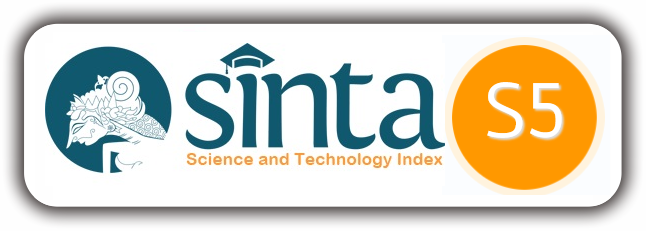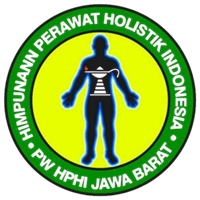Pemanfaatan Tanaman Obat Keluarga untuk Meningkatkan Kesehatan melalui Kegiatan Sosialisasi bagi Organisasi PKK di Dusun Pondok Purnawira
DOI:
https://doi.org/10.56359/kolaborasi.v5i2.487Kata Kunci:
Family Medicinal Plants, TOGA, Health Awareness, Sustainable CultivationAbstrak
Introduction: Family Medicinal Plants (TOGA) serve as a natural solution for fulfilling family health needs. However, the knowledge and awareness of the PKK women regarding the benefits and cultivation of TOGA remain limited. Therefore, socialization and training are necessary to enhance their understanding and skills in utilizing TOGA effectively.
Objective: This program aims to improve the knowledge and skills of PKK women in Dusun Pondok Purnawira in cultivating and utilizing TOGA as an alternative for family health maintenance and exploring its economic potential.
Method: The activities were conducted through socialization and hands-on practice in the form of an interactive seminar. Participants were introduced to various types of TOGA, their benefits, and simple cultivation techniques using eco-friendly planting media. Educational materials were also shared via the PKK WhatsApp group to minimize paper waste and ensure easy access to information.
Result: After the program, participants demonstrated increased knowledge about the benefits and cultivation of TOGA. They began implementing planting practices using recycled materials as planting media. Additionally, discussions emerged on utilizing TOGA not only for health purposes but also as an economic opportunity and home beautification.
Conclusion: This program successfully enhanced the awareness and skills of PKK women in cultivating and utilizing TOGA. With accessible information and practical training, participants became more independent in meeting their family’s health needs while exploring the potential of TOGA as a business opportunity. The program's sustainability can be supported through follow-up training and the use of digital platforms for continuous education.
Unduhan
Referensi
Chali, B. U., Hasho, A., & Koricha, N. B. (2021). Preference and Practice of Traditional Medicine and Associated Factors in Jimma Town, Southwest Ethiopia. Evidence-Based Complementary and Alternative Medicine, 2021. https://doi.org/10.1155/2021/9962892
Dewi, L. K., Alfajr, M., Candra, D., Pratiwi, V. J., Damanik, M. H., & Jiwandono, N. R. (2024). Empowerment of Family Medicinal Plants ( TOGA ) as an Investment in Public Health in Sojomerto Village. 3(1), 34–39.
Dilla, N. I. R., Irwansyah, I., & Atifah, N. (2024). Integration of Traditional Medicine in the Perspective of Islamic Law and Positive Law. Promotor, 7(3), 338–343. https://doi.org/10.32832/pro.v7i3.619
Houghton, P. J., & Howes, M.-J. R. (2024). the Role and Existence of Herbal Medicine in Traditional Medicine Indonesia. Jurnal Kesehatan, 2(5), 296–308.
Ingram, W. (2021). Medical Herbs. Infocus Magazine. https://doi.org/10.22443/rms.inf.1.206
Karunamoorthi, K., Jegajeevanram, K., Vijayalakshmi, J., & Mengistie, E. (2013). Traditional Medicinal Plants: A Source of Phytotherapeutic Modality in Resource-Constrained Health Care Settings. Journal of Evidence-Based Complementary and Alternative Medicine, 18(1), 67–74. https://doi.org/10.1177/2156587212460241
National Health Committee. (1998). The Social, cultural and economic determinants of health in New Zealand: Action to improve health. In Health (San Francisco) (Issue June).
Rizvi, S. A. A., Einstein, G. P., Tulp, O. L., Sainvil, F., & Branly, R. (2022). Introduction to Traditional Medicine and Their Role in Prevention and Treatment of Emerging and Re-Emerging Diseases. Biomolecules, 12(10). https://doi.org/10.3390/biom12101442
Saadah, N., & Ustmani, M. (2022). Utilization of Toga (Family Medicinal Plants) During the Covid-19 Pandemic in Tebas Gondangwetan Pasuruan Village. Proceeding 6th AICIED 2022, 369–379.
Susanti, S. (2024). Perlindungan Hukum Obat-Obatan Tradisional dalam Perspektif Hukum Kesehatan dan Hukum Kekayaan Intelektual di Indonesia. Aliansi: Jurnal Hukum, Pendidikan Dan Sosial Humaniora, 1(3), 301–311. https://doi.org/10.62383/aliansi.v1i3.230
Swain, G. R. (2016). How does socioeconomic disadvantage drive poor health outcomes? Institute for Research on Poverty, 33(1), 2016–2033. https://www.irp.wisc.edu/publications/focus/pdfs/foc331a.pdf
Ueda, K. (2004). The influence of Chinese traditional medicine on elderly patients. Japanese Journal of Clinical Urology, 58(8), 589–593.
Yunitarini, R., & Effindi, M. A. (2024). Production Forecasting of Indonesian Traditional Medicine (Jamu) Based on Information System by Using Single Exponential Smoothing Method. Management and Production Engineering Review, 15(1), 90–99. https://doi.org/10.24425/mper.2024.149992
Unduhan
Diterbitkan
Cara Mengutip
Terbitan
Bagian
Lisensi
Hak Cipta (c) 2025 Komang Widhya Sedana Putra P, Ni Komang Sri Berliana Dewi, Wayan Sri Maitri

Artikel ini berlisensi Creative Commons Attribution 4.0 International License.












